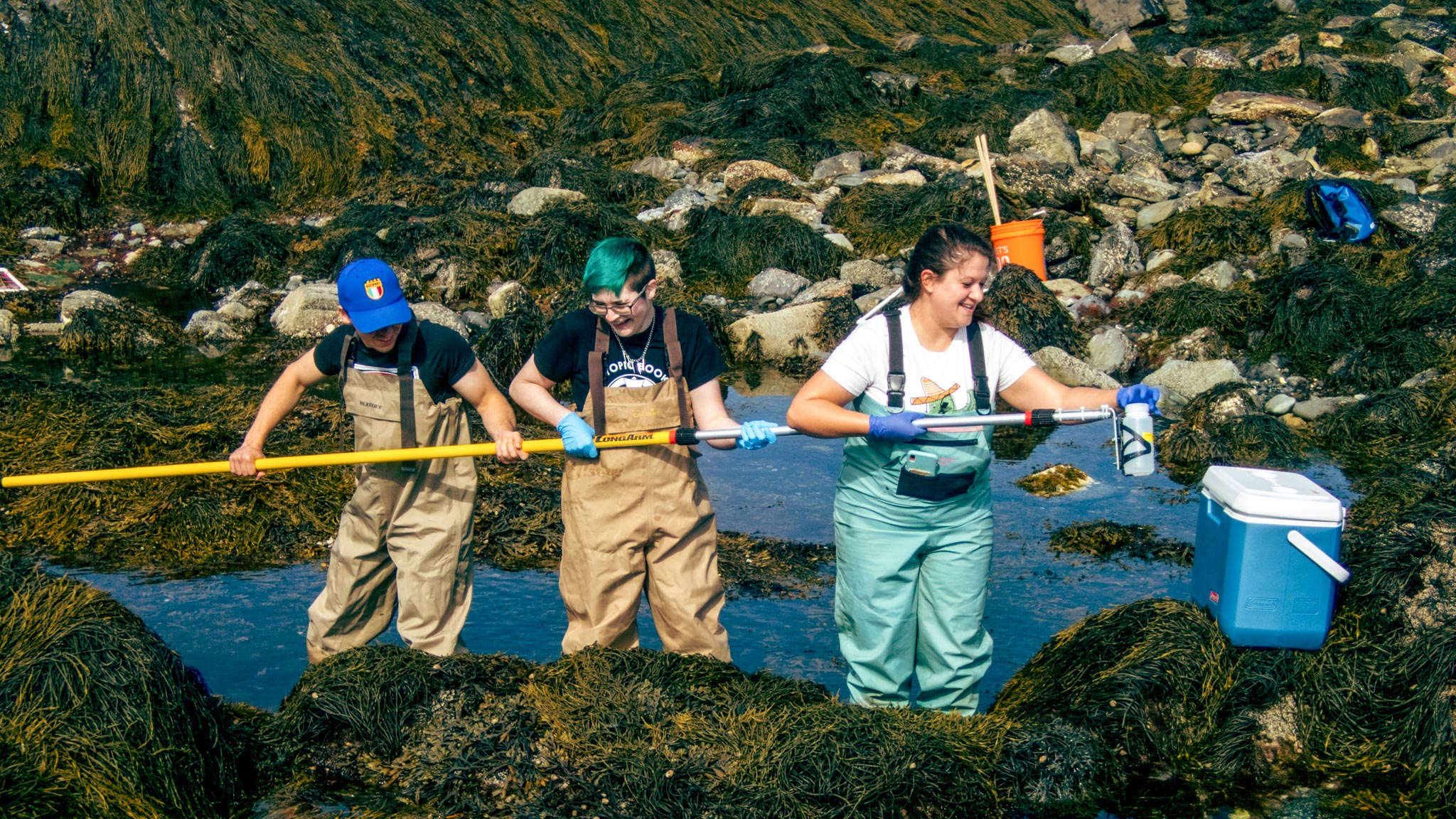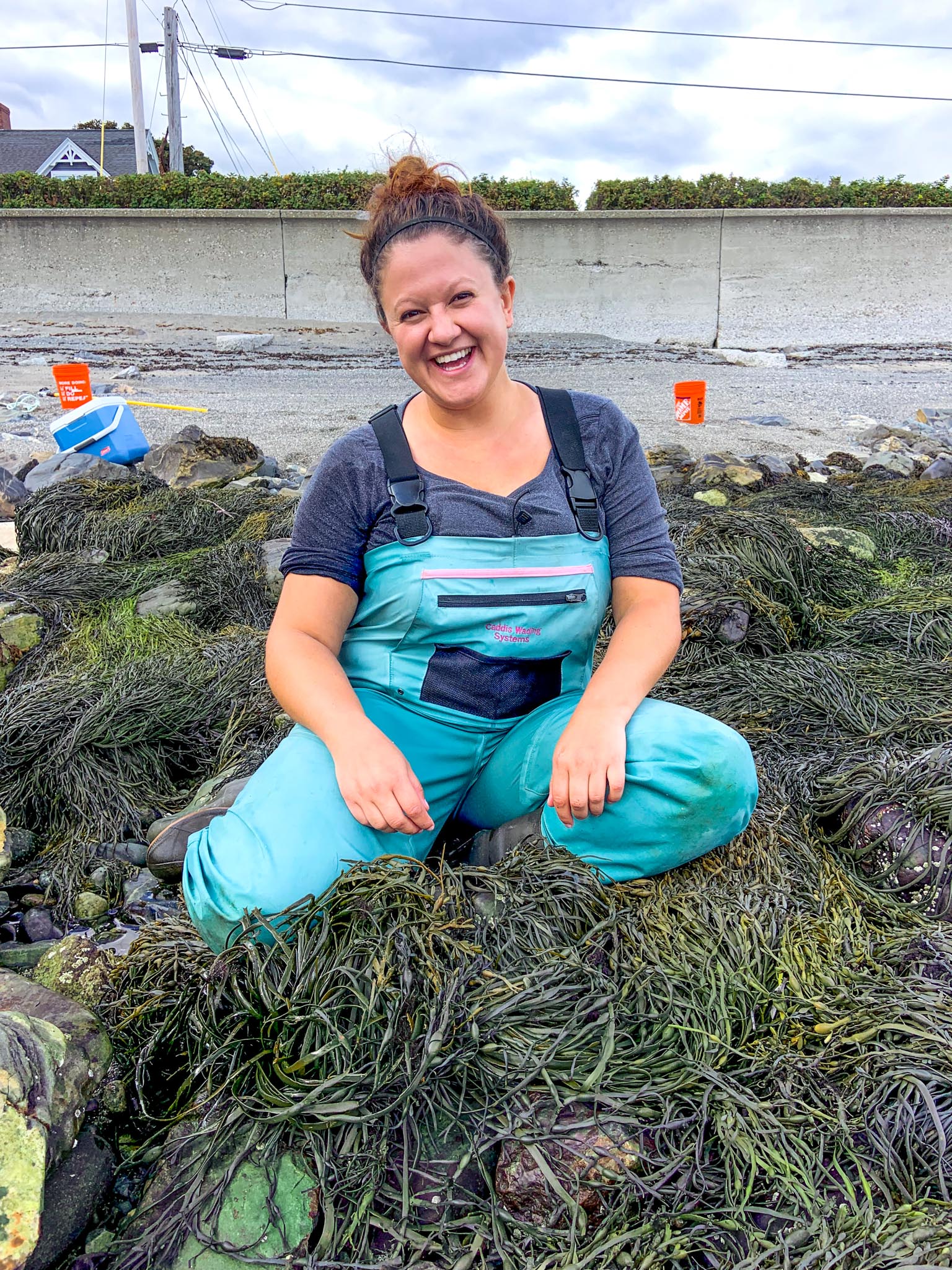
Understanding the Possibilities and Uncertainties of eDNA with Emily Pierce
By Daniel Timmermann
What we understand about and from environmental DNA (eDNA) has increased immensely over the past few years. While researchers with the Maine-eDNA program learn more about Maine’s ecosystems they are also, importantly, developing a deeper understanding of what eDNA is capable of as an emerging technology and how to best apply it.

Some of that work is done by Emily Pierce, a UMaine graduate student in the Marine Science program, advised by Damian Brady (Associate Professor of Oceanography at Darling Marine Center), Douglas Rasher (Senior Research Scientist at Bigelow Laboratory), and Markus Fredrich (Professor of Marine Sciences at University of New England) on Theme 2 of the Maine-eDNA project. In fall 2021, Pierce only had one class. This allowed her to devote her time primarily to research, writing, and reading. Pierce studies invasive invertebrate organisms in order to understand their physiology and how climate change affects it. At the same time, Pierce studies how eDNA can help detect these invasive invertebrates and how heat affects their eDNA.
Pierce explained that there is a lot that eDNA can allow us to learn, but eDNA is by no means a magic bullet. Refining the collection and analysis process is important. There are still a lot of questions when it comes to eDNA. Explaining, Pierce said, “If we take a single species and consider what it looks like and how it reacts when it’s stressed, how does that actually affect the amount of eDNA it’s putting off.” Knowing how different factors impact eDNA and its collection will go a long way in solidifying eDNA as part of a larger toolkit scientists can rely on when analyzing ecosystems. But because eDNA is a relatively new part of that toolkit there is a lot we still need to understand.
Previous to coming to Maine, Pierce completed a Master’s degree at Moss Landing in California. Pierce was the only person there studying eDNA. Pierce explained, “When I first started doing eDNA research in my Master’s degree, no one else was doing it at my school. It was kind of this black box… Being involved with the Maine-eDNA grant with everyone working on a similar topic and being able to work side by side with some of the authors of those papers that were super foundational to my Master’s thesis is just baffling. I’m no longer on this isolated island.”
The Maine-eDNA grant offers being part of a research community full of potential collaborators. “People are always willing to collaborate, I could just send a cold email to someone and they will respond to me with specifically what I asked,” said Pierce continuing, “Nobody is doing their research alone here. If there is something you can’t do, there is somebody who can help you with that.”
As Pierce continues her work with invasive invertebrates and eDNA, she is hopeful about what it could ultimately mean. eDNA could serve as an important warning system helping detect invasive species early enough to give people a chance to address the problem. Similarly, eDNA could help detect the presence of endangered species that need to be protected. As we better understand eDNA and how it is affected by stressors like heat, eDNA can become a reliable tool that researchers can incorporate into their work.
